Identification and Functional Assessment of the First Placental Adhesin of Treponema pallidum That May Play Critical Role in Congenital Syphilis
- PMID: 33408711
- PMCID: PMC7779807
- DOI: 10.3389/fmicb.2020.621654
Identification and Functional Assessment of the First Placental Adhesin of Treponema pallidum That May Play Critical Role in Congenital Syphilis
Abstract
Syphilis is a global, re-emerging sexually transmitted infection and congenital syphilis remains a major cause of adverse pregnancy outcomes due to bacterial infection in developing nations with a high rate of fetus loss. The molecular mechanisms involved in pathogenesis of the causative agent, Treponema pallidum subsp. pallidum remain poorly understood due to the difficulties of working with this pathogen, including the inability to grow it in pure culture. To reduce the spread of syphilis, we must first increase our knowledge of the virulence factors of T. pallidum and their contribution to syphilis manifestations. Tp0954 was predicted to be a surface lipoprotein of T. pallidum. Therefore, we experimentally demonstrated that Tp0954 is indeed a surface protein and further investigated its role in mediating bacterial attachment to various mammalian host cells. We found that expression of Tp0954 in a poorly adherent, but physiologically related derivative strain of the Lyme disease causing spirochete Borrelia burgdorferi B314 strain promotes its binding to epithelial as well as non-epithelial cells including glioma and placental cell lines. We also found that Tp0954 expression facilitates binding of this strain to purified dermatan sulfate and heparin, and also that bacterial binding to mammalian cell lines is mediated by the presence of heparan sulfate and dermatan sulfate in the extracellular matrix of the specific cell lines. These results suggest that Tp0954 may be involved not only in initiating T. pallidum infection by colonizing skin epithelium, but it may also contribute to disseminated infection and colonization of distal tissues. Significantly, we found that Tp0954 promotes binding to the human placental choriocarcinoma BeWo cell line, which is of trophoblastic endocrine cell type, as well as human placental tissue sections, suggesting its role in placental colonization and possible contribution to transplacental transmission of T. pallidum. Altogether, these novel findings offer an important step toward unraveling syphilis pathogenesis, including placental colonization and T. pallidum vertical transmission from mother to fetus during pregnancy.
Keywords: Borrelia burgdorferi; Tp0954; Treponema pallidum subspecies pallidum; congenital syphilis; heterologous expression system; placenta binding adhesin; surrogate system.
Copyright © 2020 Primus, Rocha, Giacani and Parveen.
Conflict of interest statement
The authors declare that the research was conducted in the absence of any commercial or financial relationships that could be construed as a potential conflict of interest.
Figures
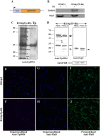
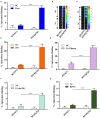

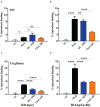
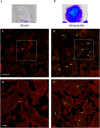
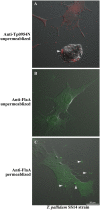
Similar articles
-
Crossing the Barrier: A Comparative Study of Listeria monocytogenes and Treponema pallidum in Placental Invasion.Cells. 2023 Dec 31;13(1):88. doi: 10.3390/cells13010088. Cells. 2023. PMID: 38201292 Free PMC article. Review.
-
Immunization with Tp0954, an adhesin of Treponema pallidum, provides protective efficacy in the rabbit model of experimental syphilis.Front Immunol. 2023 Mar 9;14:1130593. doi: 10.3389/fimmu.2023.1130593. eCollection 2023. Front Immunol. 2023. PMID: 36993963 Free PMC article.
-
Analysis of host cell binding specificity mediated by the Tp0136 adhesin of the syphilis agent Treponema pallidum subsp. pallidum.PLoS Negl Trop Dis. 2019 May 9;13(5):e0007401. doi: 10.1371/journal.pntd.0007401. eCollection 2019 May. PLoS Negl Trop Dis. 2019. PMID: 31071095 Free PMC article.
-
Identification of the Neuroinvasive Pathogen Host Target, LamR, as an Endothelial Receptor for the Treponema pallidum Adhesin Tp0751.mSphere. 2020 Apr 1;5(2):e00195-20. doi: 10.1128/mSphere.00195-20. mSphere. 2020. PMID: 32238570 Free PMC article.
-
Research progress on the mechanism of Treponema pallidum breaking through placental barrier.Microb Pathog. 2023 Dec;185:106392. doi: 10.1016/j.micpath.2023.106392. Epub 2023 Oct 16. Microb Pathog. 2023. PMID: 37852552 Review.
Cited by
-
Comprehensive Overview of Treponema pallidum Outer Membrane Proteins.Curr Protein Pept Sci. 2024;25(8):604-612. doi: 10.2174/0113892037293502240328042224. Curr Protein Pept Sci. 2024. PMID: 38661035 Review.
-
Crossing the Barrier: A Comparative Study of Listeria monocytogenes and Treponema pallidum in Placental Invasion.Cells. 2023 Dec 31;13(1):88. doi: 10.3390/cells13010088. Cells. 2023. PMID: 38201292 Free PMC article. Review.
-
Immunization with Tp0954, an adhesin of Treponema pallidum, provides protective efficacy in the rabbit model of experimental syphilis.Front Immunol. 2023 Mar 9;14:1130593. doi: 10.3389/fimmu.2023.1130593. eCollection 2023. Front Immunol. 2023. PMID: 36993963 Free PMC article.
-
Infections and Pregnancy: Effects on Maternal and Child Health.Front Cell Infect Microbiol. 2022 Jun 8;12:873253. doi: 10.3389/fcimb.2022.873253. eCollection 2022. Front Cell Infect Microbiol. 2022. PMID: 35755838 Free PMC article. Review.
-
Whole Genome Sequence of a Treponema pallidum Strain From a Formalin-Fixed, Paraffin-Embedded Fine Needle Aspirate of a Cervical Lymph Node.Sex Transm Dis. 2023 Aug 1;50(8):550-552. doi: 10.1097/OLQ.0000000000001827. Epub 2023 May 3. Sex Transm Dis. 2023. PMID: 37165832 Free PMC article.
References
-
- Ayres Pereira M., Mandel Clausen T., Pehrson C., Mao Y., Resende M., Daugaard M., et al. . (2016). Placental sequestration of Plasmodium falciparum malaria parasites is mediated by the interaction between VAR2CSA and chondroitin sulfate a on syndecan-1. PLoS Pathog. 12:e1005831. 10.1371/journal.ppat.1005831 - DOI - PMC - PubMed
Grants and funding
LinkOut - more resources
Full Text Sources

